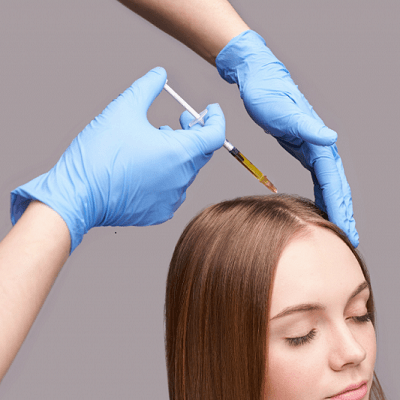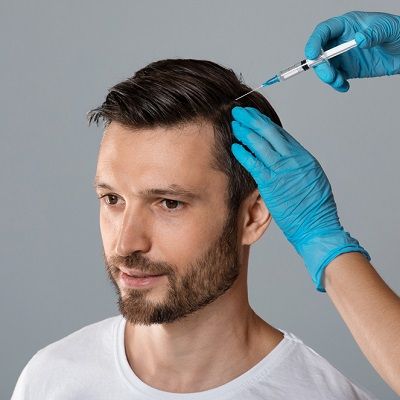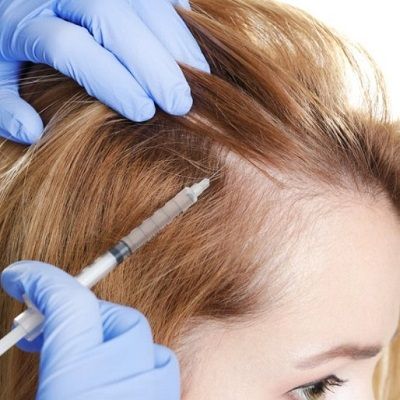
Platelet-Rich-Plasma (PRP) For Hair Loss Treatment
Hair loss may have a significant influence on your self-esteem. Men and women both suffer from varying degrees of alopecia, but Platelet-Rich Plasma (PRP) treatment provides a non-surgical option for reducing and reversing hair loss. PRP therapy is a three-step procedure that employs platelet-rich plasma from your blood to enhance natural hair growth on the scalp. PRP therapy has been utilized for decades to treat muscle, tendon, and ligament injuries, and its aesthetic applications provide great satisfaction for patients with alopecia.
CAN I DO PRP AT HOME?
No, it will be best if you do not do it at home without the guidance of a trichologist. Because the blood must be centrifuged and then injected back, it may not be safe to conduct at home because you must follow sterile protocols to guarantee the safety and efficacy of your medication. Only an expert dermato-trichologist with extensive knowledge in the area can assess the lifetime of PRP therapy on your scalp. You can maintain PRP results by employing external application solutions and following up with dermatologists regularly.
Platelet-rich plasma (PRP) therapy is therapeutic, non-invasive, and suitable for all skin types. It is a natural hair regeneration and repair method that employs patients’ blood platelets to stimulate growth factors in thinning regions of the scalp. The centrifugal device used to separate platelets rich in growth factors from the extracted plasma is FDA-approved in the United States. Then, using a microneedle, activated plasma is injected back into the scalp to release growth factors and renew the hair follicles, resulting in natural hair regrowth in the most resistant places of the scalp.
PRP hair treatment is more effective and safe compared to other treatments for hair loss and thinning, such as mesotherapy, hair transplant, scalp reduction, and so on.
Who IS A GOOD CANDIDATE FOR PRP?
PRP hair loss treatment in Dubai is an effective therapy for premature hair loss for males and females, including androgenetic alopecia and alopecia areata. PRP may help restore hair growth where it has thinned owing to tight hairstyles that have cracked and damaged the hair. Candidates must be in the early phase of hair loss and willing to undertake vital therapy.
How DOES PRP Hair Loss Treatment Function?
Reducing blood circulation to the hair follicles is one of the primary causes of thinning hair — the medical word for this is “ischemia.” It can be caused by aging, genetics, pregnancy, or even certain underlying illnesses or autoimmune disorders.
The patient’s blood is obtained during PRP Loss Treatment, much like a routine blood test. The blood is then centrifuged to isolate PRP (“Platelet Rich Plasma”), which includes concentrated levels of natural “growth factor.” Platelets that have been sorted out contain 400 to 800 times more growth factors than regular blood.
The enriched PRP is then re-injected into the person’s scalp in regions of hair loss, either by micro-needling or injection. It subsequently encourages increased blood flow to the dormant hair follicles, resulting in 100% natural hair regeneration and increased thickness of the new individual hair shafts generated.
Is PRP Hair Loss Treatment Harmful?
Some people may experience slight discomfort depending on the sensitivity of their scalp. However, our doctors can use a topical numbing lotion to make the therapy more comfortable for you. You may suffer some discomfort following the operation, but most patients report that this goes away after a few days.
IS IT SAFE TO USE PRP HAIR LOSS TREATMENT?
There is no chance of an allergic response with a PRP injection because it is made from the patient’s blood. Doctors transfer a portion of your blood to another section of your body. Infections at the injection site are possible, but they maintain a very high degree of cleanliness at our facility. They will send you home information on keeping the treatment area clean and free of potential infection.
Conclusion!
This technique is relatively painless. In most cases, patients can resume regular activities within 24 hours. Over-the-counter pain relievers can be used to control discomfort. Minor forehead swelling may occur for a few hours following the surgery, but this is typical and will subside within 48 hours. Before you depart, our technician will provide you with a list of strenuous activities that you should avoid. Hair cleaning can continue shortly following the process.
Finding an experienced hair specialist in Dubai who will take the time to understand your treatment objectives and establish a treatment plan suited for you is critical.


































